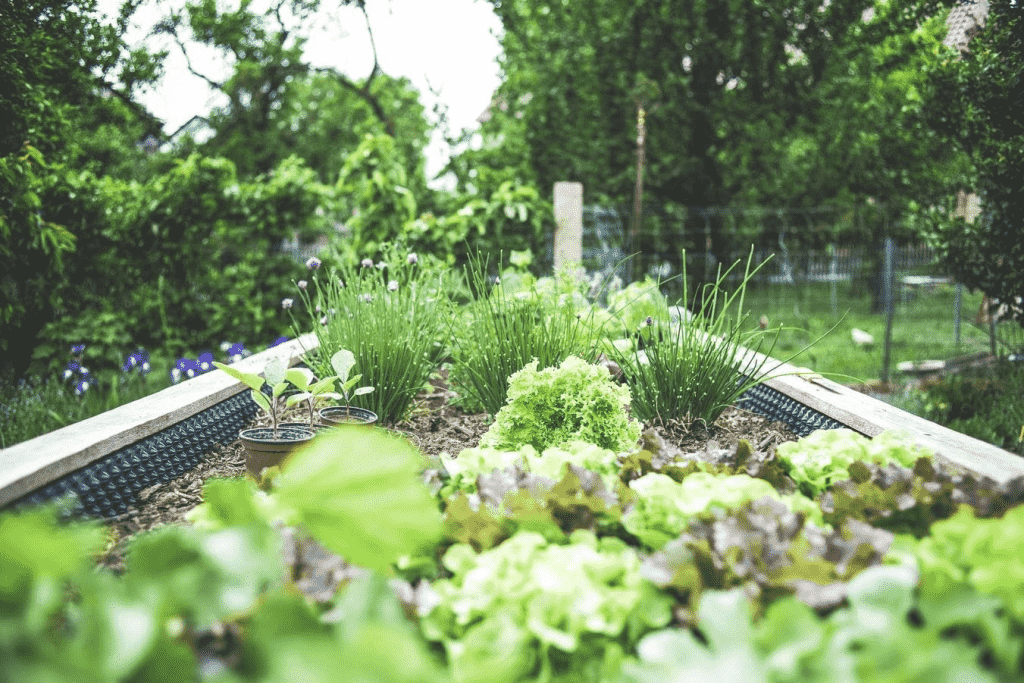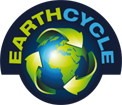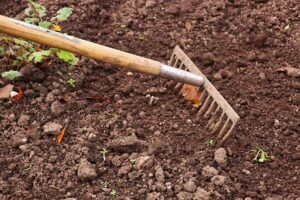Being offered a new allotment plot might give you the urge to rush into digging and planting but before you start, make sure you’re well-prepared. Here our team share some top tips for making the best of your exciting new allotment space.
When’s the best time to start a new allotment?
If your site is very overgrown or full of weeds, you might be tempted is to rip everything out and dig over the whole plot but, depending on the time of year, it may be worth wating to see if any of those brambles are actually overgrown fruit bushes or if anything exciting pops up in the spring.

Speak to fellow allotment holders and plan the space
While you are waiting to see if anything is worth saving, think about and plan the layout of the space. You might find it worthwhile to connect to other people on your allotment to find out if they’ve enjoyed any particular successes or faced challenges. Having a chat over a cup of tea with your fellow allotment holders could mean you pick up a wealth of knowledge.
It can also be useful to consider the practicalities – is there a shed that might need some patching up or space in one to keep your tools in? When you clear the ground, think about where you’re going to put the garden waste. There may be an area you can turn into a compost heap for your green waste.
Check out our handy guides on how to make a composter and garden composting tips.
How to start an allotment
Once you’ve done your homework and planned your space, it’s time to get your tools in the ground! Don a pair of sturdy gloves, cut back any brambles, plant stems and overgrowing foliage so the way is clear to get to the roots with a fork. It may be tedious but clearing as many weeds as possible at this stage will make your life easier in the long run. Whilst you won’t eliminate this problem completely, weeding with no plants in the way is often easier than trying to pull things out while young vegetables or flowers are emerging.
Mark out your allotment beds
To raise or not to raise… raised beds can make your space easier to organise and, ultimately, to garden, as there will be less bending and lifting. If you do decide to create these raised beds read ‘how to make and fill a raised bed’ guide. Otherwise marking out beds can help you plan your planting and keep things organised.

Take note of the sun
No matter which system you use, when you are planning your beds think about the orientation of your plot, where will the sun fall at different times of the day and throughout the year. Are you on a windy site and in which direction is the prevailing breeze? Are there lots of birds or any animals such as rabbits or deer which may eat your plants? Do you need some level of protection to keep your crops safe?
Taking note of all these factors gives you an idea of where to set out your beds and what steps you will need to take to help protect your crop from pests and Mother Nature.
Understand your allotment soil
No matter if your beds are raised or marked out at ground level, your soil will likely need some enrichment. Our bulk bags of topsoils, composts, and soil conditioners can help deliver the balance of nutrients and the structure and growing conditions of your chosen plants. Digging in or layering quality, peat-free material at this stage will pay rewards in the long term.

What to grow on an allotment
Whilst it can feel like there’s a lot of preparation to get to this stage, now is the moment to begin sowing, planting and growing! Only grow what you like to eat and sow seeds little and often to ensure a continuous supply, rather than a glut at the height of the season and then nothing. Give our succession planting guide a read so you can make the most out of your allotment throughout the year.
Again, that chat with your fellow allotment holders will help you to know what has been grown successfully in the past and you may even be able to swap plants and seeds. And it’s not all about fruit and veg, plenty of allotments are set up to grow cut flowers to brighten the home so think about setting aside an area for these.
More top tips for starting an allotment
- Go wild – allowing a small section of your allotment to grow wild, or sowing a small wildflower patch can help enormously with attracting pollinating insects.
- Introduce some water – having an area of water, or just a simple container pond, will help encourage vital insects.
- Enjoy it – setting up a new allotment is hard work but putting in the time and effort now will allow for many years of happy and, hopefully, successful growing. And nothing tastes better than home-grown.




